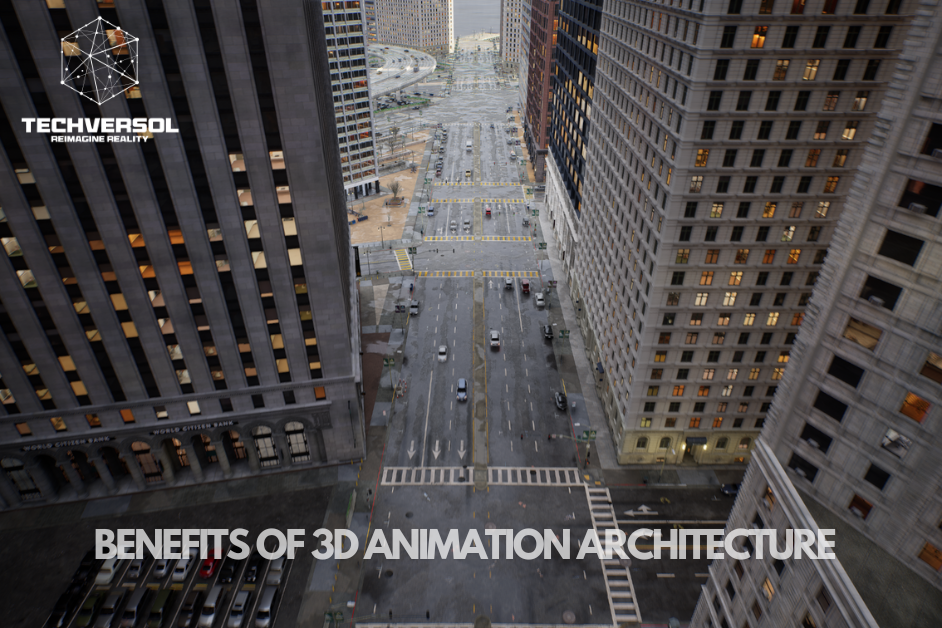3D animation has revolutionized the architecture field by delivering an immersive and dynamic manner to present and visualize designs. Architects often leaned on static blueprints and 2D renderings to share their views, which usually limited clients’ learning of the final consequence. The benefits of 3d animation architecture are clear: it enhances understanding and engagement through vivid, detailed presentations.
Architects can now develop precise, interactive, and realistic representations of their tasks with the beginning of 3D animation which offers considerable advantages across different stages of presentation and design.
In this article, we will analyze the essential advantages of utilizing 3D animation in architecture which include effective marketing, improved visualization, enhanced client communication, and streamlined design processes.
Visualization and Realism
Realistic Representation:
The immediate benefit of 3D architecture animation is its capability to deliver a realistic and real representation of architectural designs. 3D animations enable stakeholders and clients to witness the building from numerous angles and stances unlike traditional 2D drawings or static rendering. This vibrant architectural visualization assists in comprehending the spatial proportions, relationships, and aesthetics of the design more intuitively.
Architectural Space:
3D animations deliver an exceptional experience that cannot provided by static images. With animated fly-throughs and walk-throughs the viewers can analyze the architectural space as if they were present physically. The experience enables clients to nicely get the layout, scale, and flow of the space which makes it effortless to visualize how the final project will feel and look.
Accurate Representation:
Architects can present complex details that might be overlooked in 2D rendering with the help of 3D animation which includes material finishes, textures, and lighting effects. Animations deliver a more real representation of how artificial and natural light will interact with the building, improving the widespread visual appeal and design functionality by blending realistic lighting and shadow effects.
Client Communication:
Communicating Ideas:
Communicating various ideas of architecture to clients can be tough particularly when utilizing technical drawings or abstract blueprints. 3D animation facilitates this approach by summarizing intricate design ideas into visually easy-to-understand and engaging presentations. Clients can notice how diverse design elements come together and create more instructed conclusions about the project.
Feedback and Revisions:
3D animations simplify sufficient feedback by delivering clients with an apparent idea of offered changes. They are better prepared to deliver productive feedback when clients can visually analyze design transformations in real-time. The process of iterative assists in refining the design and assuring that the final consequence perfectly aligns with the client’s concept and expectations.
Realistic Visualization:
The incomprehension between clients and architects can lead to expensive delays and revisions. 3D animation assists in filling the gap by delivering a more accurate and straightforward design depiction. Clients are less likely to misunderstand design elements or create unrealistic needs when they can see a wide and realistic project visualization.
Marketing and Sales Tool:
Effective Presentations:
In the architecture markets and competitive and effective real state, standing out is important. 3D animations deliver a convincing method to showcase architectural projects to potential investors, buyers, or stakeholders. Immersive animations can present the features of the project which allow it to emphasize its exceptional selling points and develop interest and excitement.
Virtual Showcases:
3D animations can be utilized to develop virtual showcases and tours that enable potential clients to analyze the task from their homes’ comfort. These tours are specifically appropriate for large-scale marketing properties or developments that are yet under construction. It delivers a realistic preview of the finished product which helps attract specific buyers or tenants.
Online Presence:
3D animation can especially improve an architectural business’ online presence. Fascinating animations have more potential to be conveyed on social media, which features on websites, which includes campaigns of digital marketing that allow improved visibility and can lead to more queries and prospects for the business.
Design Process:
Design Concepts:
3D animation enables architects to visualize concepts of design more tangibly which assists in specifying potential cases or design imperfections earlier in the process. Architects can create well-informed conclusions and refine their ideas before embarking on the final design by analyzing various design possibilities and scenarios through animation.
Design Reviews:
Assessing and reviewing proposals of design can consume much time and complex. 3D animations facilitate this approach by delivering a straightforward and wide view of the design. Contractors, clients, stakeholders, and engineers can effectively discuss and review the task which leads to more effective reviews of design.
Integration With Technologies:
3D animation allows to integrate seamlessly with various technologies which includes Virtual Reality (VR) and Building Information Modeling (BIM). BIM delivers straightforward details about creating components and systems, visualized in 3D animations. Additionally, VR can improve the experience by letting users blend with the design in a virtual environment and it enhances accuracy and efficiency throughout the construction and design phases.
Cost Efficiency:
Change Orders:
During construction, precise 3D animations enable minimize the possibility of costly change orders. Architects can manage possible problems and create required adjustments before construction starts by delivering a precise design visualization and it allows lessening the hazard of design modifications during the phase of construction, which can be time-consuming and costly.
Decision-Making:
Clients can create well-informed, effective, and quick decisions with a precise and realistic representation of the design which allows to accelerate the process of approval and allows to move the project forward delays.
Enhance Budget Management:
3D animations can assist in addressing project budgets more effectively. Architects can specify potential cost implications and create adjustments to remain within budget by visualizing the detailed design. This visionary strategy also assists in avoiding unplanned expenses.
Conclusion:
3D animation benefits in architecture are comprehensive and transformative. 3D animation has become an invaluable asset in the field of architecture by improving visualization and realism, enhancing client communication, delivering compelling marketing tools, and facilitating design processes. It enables architects to showcase their designs more engagingly and comprehensively which leads to a better understanding of clients, well-informed decisions, and successful projects.



